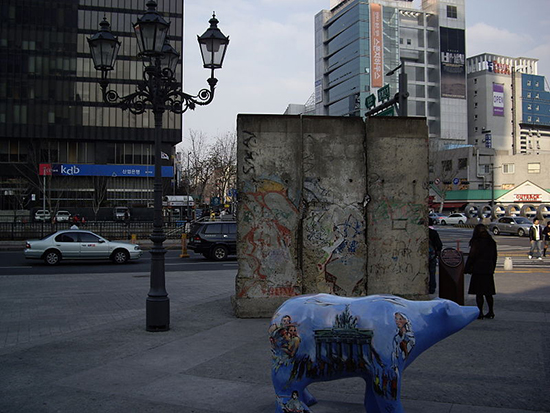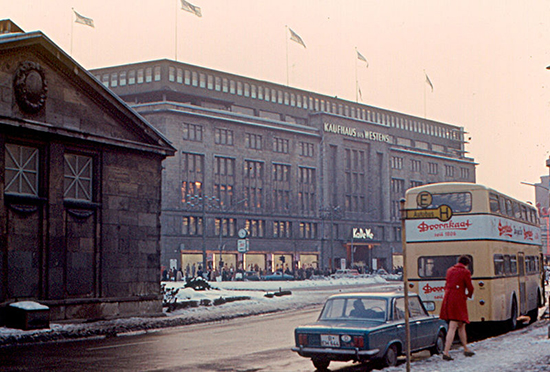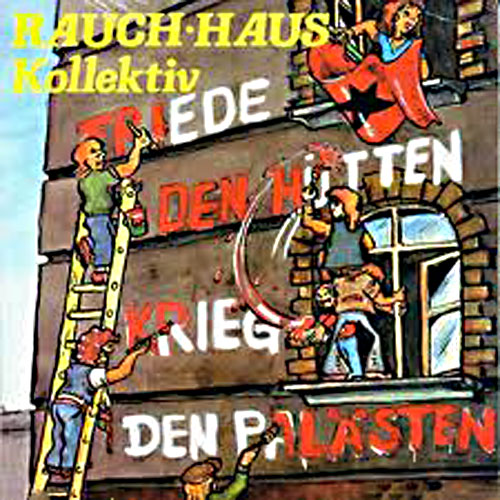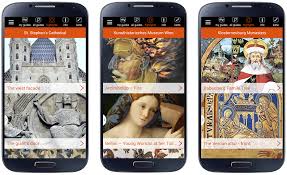So, Where is the Berlin Wall nowadays?
After the end of World War II, Germany’s western side was controlled by the Western Allies and the east side by the Soviets. In 1960, millions of runaways from the eastern to the western part drastically affected the Soviet Germany. To prevent further escapes, a wall that fenced West Berlin was constructed in 1961. On the 9th of November 1989 the demolition of the wall began, leaving behind the sad story of a divided country that suffered the horrors of the war for many years. Most of the wall was recycled to rebuild the reunified Germany, but some fragments remain in museums and other important venues around the world. So, Where is the wall nowadays? Seoul- South Korea A piece of a fallen wall can be especially inspiring in a country that still suffers the horrors of division. There are three sections of the wall in the middle of Seoul at the southern end of Cheonggye Stream’s Jangtong Bridge. Berlin gave Seoul these pieces of the wall along with a sculpture of a blue bear that symbolizes the German capital. These symbols of consolation and encouragement seemed to be appropriate for a country that still has reunification ahead of it. Address: Cheonggyecheon Jongno 5(o).6(yuk)ga-dong, Seoul Photo vía Las Vegas, USA There are many segments of the Berlin Wall in the United States, but the most curious place of all is, undoubtedly, the toilets of the famous Main Street Station Casino. Obviously it is not possible to piss directly on the wall, but in the urinals that are on it. On top of the curious historical urinals, you’ll find...Schöneberg, a stylish and extravagant district in the center of Berlin
If you ask anyone under the age of 50 to list the neighborhoods in Berlin, you’ll hear Kreuzberg, Friedrichshain, Mitte, Prenzlauer Berg, Neukölln … But it is likely that one will be left that would have been the first on the list had you asked the question to a young person about 40 years ago: Schöneberg. Photo: Roger Wollstadt Schöneberg is a central spot in Berlin, located in what was once West Berlin, between Charlottenburg and Friedrichshain-Kreuzberg, south of the river Spree. It has a stately elegance and was an important area in the past, before Friedrichshain and Kreuzberg became the more popular areas for new arrivals to Berlin. Historically, Schöneberg is one of the most popular districts of Berlin but it is also one of the most overlooked by new generations who visit the German capital. It’s a district that evokes both the history and the golden age of the city without losing a bit of its charm and attraction. The Schöneberg district of Berlin epitomizes the golden era of the 20s and early 30s during the Weimar Republic and was where the majority of intellectuals frequented. They arrived from all over Europe to this liberal city to enjoy its arts and literary scenes as well as its open homosexuality, since Schöneberg was the gay center of Berlin until the Nazis came into power. Bars like Eldorado and cabarets were frequented by intellectuals of the time such as the English writer Christopher Isherwood and his contemporaries who once went to see the actress and singer Marlene Dietrich or other cabaret artists. Berlin flourished after the First World War...BerlinApotheke
Apotheke is a pharmacy that has various stores in the centre of Berlin that are open 24h a day so that their clients don´t have to worry about the time.
Mauer Museum Berlin
The Mauer Museum is the Berlin Wall Museum, which is located next to the reconstructed Check Point Charlie, one of the control points in divided Berlin.
Rent a Scooter in Berlin
At Rent a Scooter you can rent motorcycles from 25€ and get around Berlin without worrying about the traffic.
Centro Vital Berlin
Centro Vital Berlin surpasses the concept of run of the mill spas. It´s a true rehabilitation spot for mind and body.
Radkom Berlin
Radkom is a bicycle shop where not only do they sell them but they also rent them to see Berlin and get to know the whole city.
Berlin Underground
The Georg von Rauch squat is a good place to begin this adventure in Berlin. its vegetarian restaurant offers you a dish for only 2 euros, as well as live music and an atmosphere which has nothing to do with formal tourism. There are yoga lessons and many activities which people of all ages, races and conditions attend. You won´t find a single visible sign of the restaurant, but that´s no good reason to not give a warm welcome to all attendants. The house is a historical building and those who work at the place do so voluntarily. Another similar place is Kunsthaus Tacheles, which is an art house located in Mitte, on Oranienburger Straße. Its architecture and design are very attractive, it´s built over 9,000 sq metres and in its interior we can find graffiti, paintings by local artists, contemporary art sculptures and murals which are on the walls on the exterior of the house. The building is a collective hostel for artists who lack the resources to pay for rent. Tacheles was originally a department store called Friedrichsstadtpassagen, built in the Jewish district next to the synagogue, after having been a Nazi prison during the Second World War, which was partially destroyed afterwards. After the fall of the Berlin Wall, it was taken by artists and named Tacheles, which means ´speaking clearly´ in Yiddish. At Tacheles there are workshops, a club with live music and a cinema. Bar Zapata is also unmissable for those who like to live the night in a special way. It´s next to Tacheles, which gives it a special touch, and it´s very...Schloss Charlottenburg
Charlottenburg Palace is a beautiful architectural work that finds itself in Berlin and that used to be a royal residency.
Alexanderplatz
Alexanderplatz or Alexander Square, is famous in Berlin because it´s in the city centre and it´s always participated in the activities in the capital.

 English
English Français
Français Deutsch
Deutsch Italiano
Italiano Español
Español



